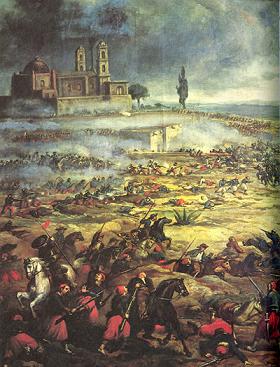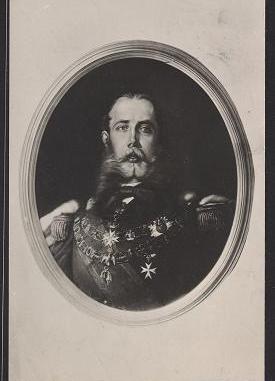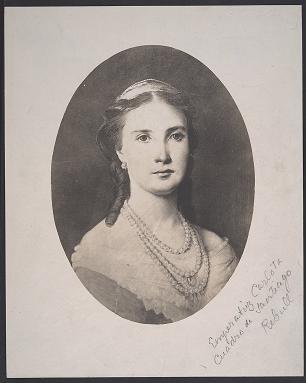| << Chapter < Page | Chapter >> Page > |
Contrary to popular belief, Cinco de mayo (May 5th) is not Mexican Independence Day (which is Sept. 16, or diez y seis de septiembre ). Rather, Cinco de mayo commemorates a rather small battle, the Battle of Puebla, in a series of battles during French occupation of Mexico, known as the Franco-Mexican War or the French Intervention (1861-1867). The Cinco de mayo holiday is more popular among US Americans than it is among Mexicans, where the holiday is mainly celebrated in the Mexican state of Puebla.
Puebla, mexico

Mexico had incurred a substantial amount of debt after a tumultuous and violent timeline of wars and violence, including its independence from Spain (1821), the Mexican American War (1846-1848), and the Mexican Civil War (1858). The country owed money to Spain, England, and France. Mexico’s inability to repay the loan caused France to act. Napoleon III, President of the French Second Republic, seized the chance to expand the French empire. In 1861, French troops invaded Mexico’s gulf coast at Veracruz. Meanwhile, the United States was engaged in its own Civil War (1861-1865).
Battle of puebla

The French army proceeded toward the capital, Mexico City, forcing President Benito Juárez’s government into exile. On May 5, 1862, the French encountered resistance at Puebla, Puebla under the leadership of General Ignacio Zaragoza at the Loreto and Guadalupe forts during what would be known as the Battle of Puebla. Despite being greatly outnumbered (4,000 Mexican soldiers against the 8,000 well-equipped French army), the Mexicans defeated the French. This was only the first battle in the struggle to oust French occupation.
In September of that same year, 30,000 more French troops arrived in Mexico. In 1863, the French successfully captured Puebla and Mexico City. In 1864, Napoleon III sent his relative, Archduke Maximilian of Austria (known as "Maximiliano") along his wife, Charlotte of Belgium (known as "Carlota"), to reign as Emperor and Empress of Mexico. They chose to make Chapultepec Castle in Mexico City their home.
Emperors of mexico
Archduke maximilian of austria

Charlotte of belgium

Upon the conclusion of the US Civil War, the United States provided assistance to Mexico, and Mexico was able to expel the French in 1867.
The most significant aspects of the Battle of Puebla are that this first victory served as an inspiration to the Mexican people and set the tone for following battles during the Franco-Mexican War. Secondly, since this battle, no country in the Americas has been invaded by European forces.
Cinco de mayo in the United States, particularly in California and the Southwest, has become a time to celebrate cultural heritage through music, song, dance, and food. Large-scale celebrations are popular in cities with significant Mexican-American populations, such as Los Angeles, Phoenix, Albuquerque, San Antonio, El Paso, etc. Rather than a celebration of the actual Battle of Puebla, the holiday in the US signifies heritage and cultural roots.
Commercial interests have also contributed to its popularity in the US. Restaurants, in particular, have capitalized on this holiday in order to promote the sale of Mexican food and products.

Notification Switch
Would you like to follow the 'Hispanic culture for the spanish classroom' conversation and receive update notifications?